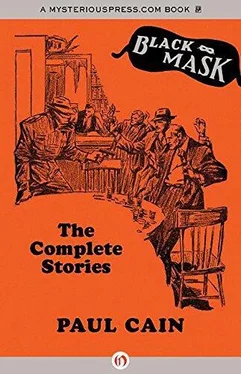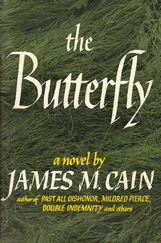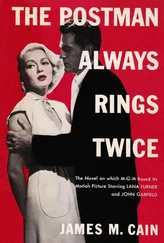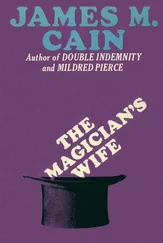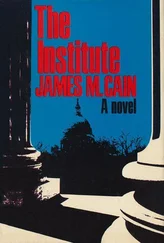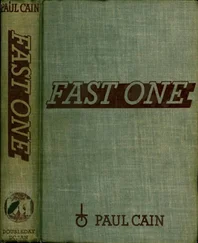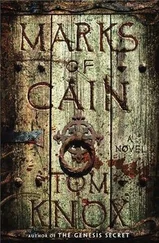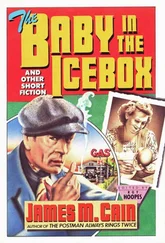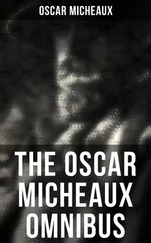Then there’s “The Tasting Machine” (1949), the last piece of fiction Sims published. It appeared under the Peter Ruric byline in Gourmet magazine, which would later run his article on Mallorcan cuisine. The story is collected here, although it is expressly not one of Cain’s hard-boiled narratives. Rather, it’s something like a hypertrophied version of John Collier’s urbane fantasies. Compare its first sentence to the opening of Fast One :
In fine weather, of which there was a spate that summer, it was the whim of M. Etienne de Rocoque to emerge from his restaurant in East Sixty-first Street at exactly six-thirteen of an evening and stroll west to Fifth Avenue, south to Sixtieth, east to Park Avenue, north to Sixty-first, and so back to the restaurant and home.
The protagonist’s very name signifies a new point of departure, a Rococo tumescence that stands in direct opposition to Cain’s minimalism. But style is ultimately style, and this is another exercise.
De Rocoque is a master chef, who holds a beautiful girl named Mercedes captive above his restaurant. He had “snatched” her “from the harem of a mighty caliph at the age of three” — “after wading through veritable seas of blood” — and has “reared” her for the last fifteen years, “inviolate from the world.” Among de Rocoque’s companions is a talking myna bird named Gertrude, “whose words and usually her sentiments were most uncouth.” The chef’s ménage is invaded by a little robot dead-set on tasting everything in its path, including Mercedes. The story climaxes as Mercedes — sequestered with the tasting machine — cries out in either agony or joy, while de Rocoque strikes at her locked door with an ax. Sims’s career in fiction ends with an ironic fantasy about a hypersensual stylist whose attempts to control his inner world are born of insecurity and frustrated by mechanistic drives.
This surreal joke-work in Gourmet magazine casts an odd backward light on the Cain stories. Losing himself in the styles he’d mastered, Sims gave free rein to the things he most wished to obscure. But whatever it is that initially pushed him to the outer reaches of the hard-boiled and propelled his characters on their collision courses, the work he left behind as Cain won’t be outdone.
Paul Cain was not the only Black Mask regular to transcend the limitations of his genre, but he is unique in having transcended those limitations by exploiting them to their fullest. He achieved a refinement of the hard-boiled manner that is truly exhilarating. Unlike Hammett and Chandler, whose work reckoned with the problems of modernity, Cain embraced a modernist aesthetic, manipulating the devices available to him with radical experimental energy. Cain’s focus on aesthetics accounts for the dizzying diversity of his fiction — his use of a variety of perspectives, stylistic registers in dialogue, and narrative structures. This focus also liberated Cain from moral concerns, allowing him to craft distinctly modern antiheroes whose compulsive, uninhibited risk-taking is a fictional analog to their creator’s own approach to writing.
Cain’s work is anything but confessional, but this triumph of style, this masterful performance — this modernistic put-on, as it were — testifies to the tremendous gifts and troubles of the man behind the pose. The stories bear his indelible signature, in invisible ink.
Sims was an ironist given to elaborate fronts that revealed as much as they concealed. His tenuous grasp on his own identity allowed him to sink, for a brief time, into the role of Paul Cain, and to keep playing as long as he could. As the narrator of “Dutch Treat” says about a game of “Spit-in-the-Ocean,” “I won, or maybe I lost — I forget which.”
The letters and drafts quoted in this introduction are housed in box 33, folder 9, of the E. R. Hagemann Papers and Collection of Detective Fiction (1672), and box 5, folder 6, of the Joseph T. Shaw Papers (2052) — both in the Department of Special Collections of UCLA’s Young Research Library — in the Sinclair Lewis Letters to Marcella Powers collection, at the St. Cloud State University Archives, St. Cloud, Minnesota, and in the “Peter Ruric AKA George Sims” file at the Crippen Mortuary, located at 2900 Honolulu Avenue, La Crescenta, CA 91214. I thank the library staffs, the staff at the Crippen Mortuary, and the Harrelson family for permission to quote this material. An earlier version of this essay appeared in the Los Angeles Review of Books, and I thank them for the chance to amend, expand, and republish it. I am especially grateful to Keith Alan Deutsch, my brilliant, indefatigable editor, for soliciting this piece, for helping me at every stage of the writing process, and — most of all — for facilitating Paul Cain’s long-deserved rediscovery.
I owe my deepest gratitude to Mike and Peggy Harrelson, son and second wife of the man at the center of this essay. To say that they have been gracious would be an understatement. Their generosity and warmth were an unexpected gift. I would not have made contact with Mike were it not for a chain of remarkable coincidences, one of which placed me in the basement of UCLA’s Young Research Library on the same day that Professor William Marling of Case Western Reserve University was conducting his own research on the Hagemann collection. Bill asked me what I was up to, I told him, and he mentioned that he was in touch with the Harrelson family. I remain in his debt.
Mike’s initial letter to Bill Marling, in which he describes himself and his brother, is worth quoting: “Peter [Craig Harrelson is an] emergency room doctor who works very little and incessantly travels the planet’s backwaters. He’s a colorful cat who marches to his own drummer. I, while much less charismatic, have made part of my living with a pen.” Their father, of whom they knew very little until recently, seems to have passed on a gift for language and a thirst for adventure, as well as some other curious traits. I am told that, like his father, Peter Craig has been known to rename his girlfriends.
The Harrelsons have supplied me with a wealth of information about Paul Cain/Peter Ruric’s later years, which I am honored to pass on to his readers. Peggy’s memories and insights have added color and nuance to an unnaturally stark image — an image of Cain’s own making. Nothing represents this contribution more vividly than the three photographs of Cain/Ruric, Peggy, and their son Peter Craig, taken in the summer of 1957 at the Gregson family home in Varina, Virginia. These candid, animated family portraits are a necessary corrective to Cain’s stylized black-and-white author photo from the early ’30s; the author photo was intended to disguise his identity, while the later shots capture the man at his happiest, among his loved ones, off-guard.
Much of what we know about Sims’s ancestry and early childhood owes to the pioneering work of Lynn F. Myers, Jr. and Max Allan Collins, whose research has cleared up a great number of longstanding mysteries. I am grateful to Lisa Burks, a journalist and author working on the history of Glendale’s Grand View Memorial Park, who provided invaluable information about Sims/Ruric/Cain’s cremation records. I must also thank David A. Bowman, whose writing on Cain was nothing short of groundbreaking. Bowman’s work was interrupted by a terrible accident in 1989, from which he recovered. He continued to write fiction, but abandoned his biography of Cain. He passed away on February 27, 2012, at the age of 54.
Works Cited and Further Reading:
Adamic, Louis. Laughing in the Jungle: The Autobiography of an Immigrant in America . New York: Harper & Brothers, 1932.
Читать дальше
